If you’re in the market for a new ATV, one factor you’ll need to consider in your search is engine power, which has a correlation with engine size. The number of CCs (cubic centimeters) is the measurement of the ATV’s engine volume. The general rule is that larger vehicles need more CCs, and more CCs means more power. Every ATV engine should have its CCs printed or stamped on it somewhere.
But power isn’t the only consideration, or even the most important one, especially if you’re new to ATVs. You should consider a variety of factors, including the kind of ATV you’re most comfortable riding, and the tasks you’ll be performing with the ATV.
One of the most common questions people have when searching for an ATV is how much power they need their engine to have. While it can be tempting to maximize your engine power, this really will not be necessary for most users.
Here’s a quick look at some of the most common types of ATVs and their typical engine requirements.
 Sport ATVs are generally not going to be used for utility work like towing, hauling and other odd jobs around your property.
Sport ATVs are generally not going to be used for utility work like towing, hauling and other odd jobs around your property.
You are the best judge for what your needs are as far as engine size and power, but the majority of buyers do not require a massively powerful engine. You’ll save money on both fuel and the vehicle itself by going with an engine that’s suitable for your needs.
Black Widow 8’ Extra-wide Arched Dual Runner ATV RampsWhen researching ATVs, don’t forget to look into ATV ramps as well! These ramps make it easy to load or unload your ATV on to a truck bed or trailer.
Black Widow Pro has a large selection of ATV ramps, all of which are designed to be lightweight yet extremely durable, offering high traction for extra safety during loading and unloading. Any ramp you purchase should have a load capacity that makes it capable of supporting the loaded wet weight of your ATV. Non-folding ATV ramps are usually shorter and designed for loading ATVs into trailers. If you need a longer ramp to get your four-wheeler into the bed of a truck, folding ramps in full-width or dual runner designs provide the length yet store compactly when they’re not needed.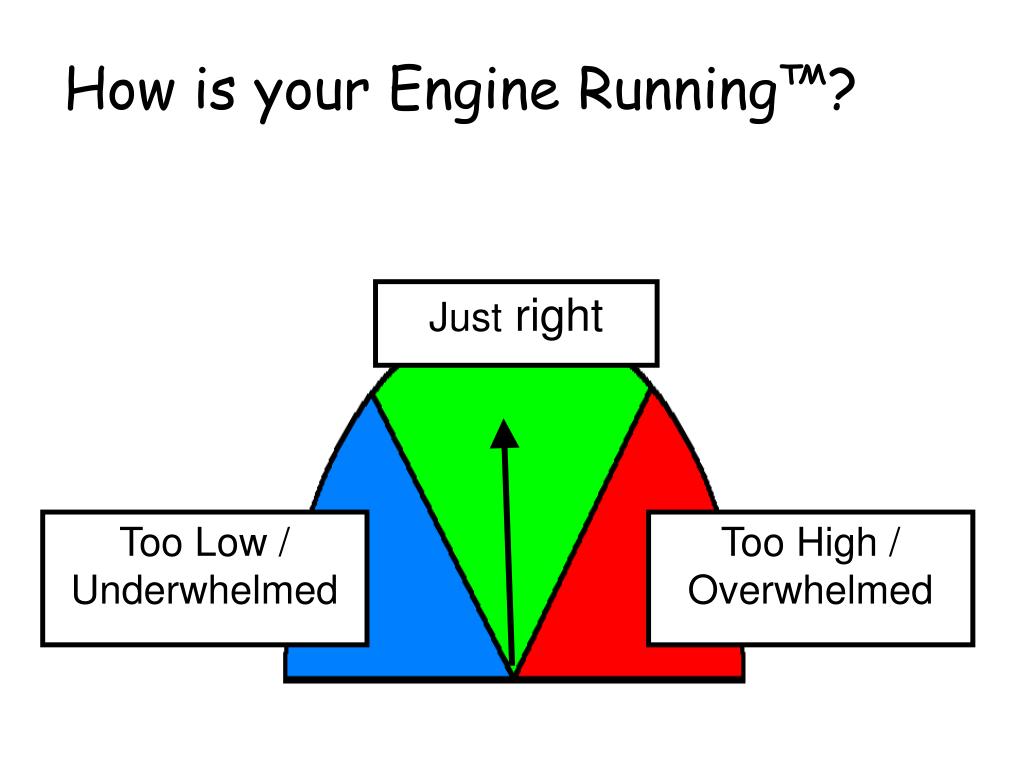
If you’re out looking for your first four wheeler, you will no doubt run across the term CC. But what does that even mean? Maybe you know it has something to do with the size of the engine, but you’re wondering how that affects you. Well, in this article I will go over exactly what CC means and which size engine you should be looking for yourself.
A ‘CC’ is a cubic centimeter and is known as the size of the ATVs engine. You may also see CC stand for cm³ or milliliter. It is basically just a measurement of volume that can fit inside the engine. If you have bigger cylinders and bigger pistons, you will have more power and also a higher CC. To use a car as an example, a 2 liter engine is 2000 cm³, 2000 milliliters, or 2000 CC.
To think of it another way, it is the amount of gas and air mixture that can fit in the engine to move the pistons. The more mixture that can fit, the more power your engine will have.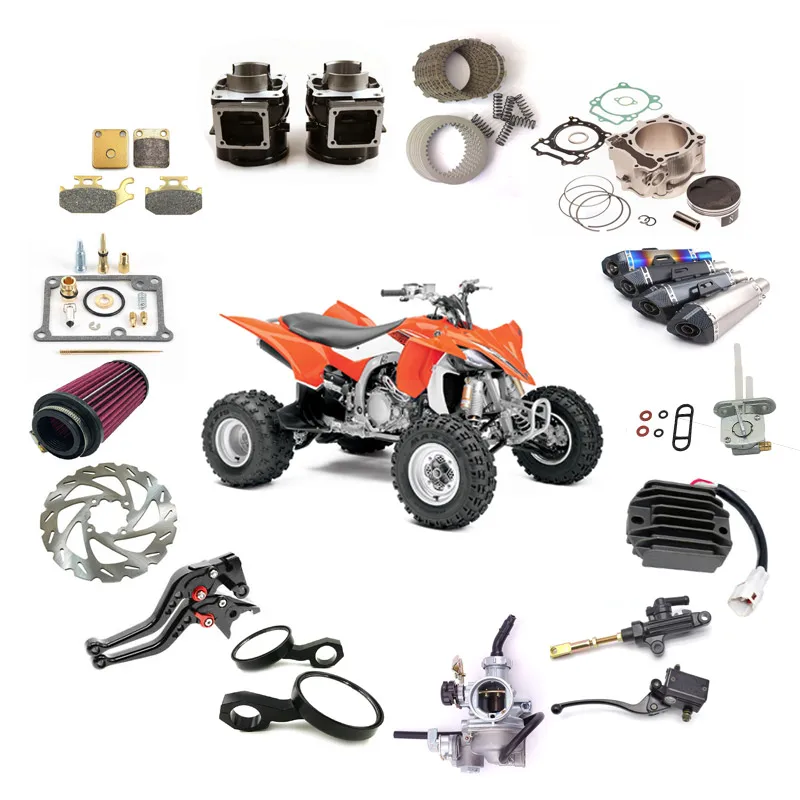 Something to keep in mind though. If you have more air and gas mixture going into the engine (you have a higher CC), you will be using more gas.
Something to keep in mind though. If you have more air and gas mixture going into the engine (you have a higher CC), you will be using more gas.
You can also view the CCs of engine as the engines displacement. If the volume in your cylinder increases, your engine has more combustion. Your piston travels from bottom center to top center, with your spark plugs igniting the fuel and air mixture to push the piston back down. Which eventually turns your wheels. With more room for air fuel mixture, the piston will have more of a push back down, which sends more power to your wheels.
You will sometimes notice the size of the engine in CCs stamped onto the engine somewhere. They typically stamp in a more accurate measurement than what the engine is considered to be. But if you see something like 348cc stamped into the engine, it is considered a 350cc engine.
To calculate the displacement or CCs of an engine they use a simple formula. Well, ok it’s not that simple, but it’s the same formula used every time.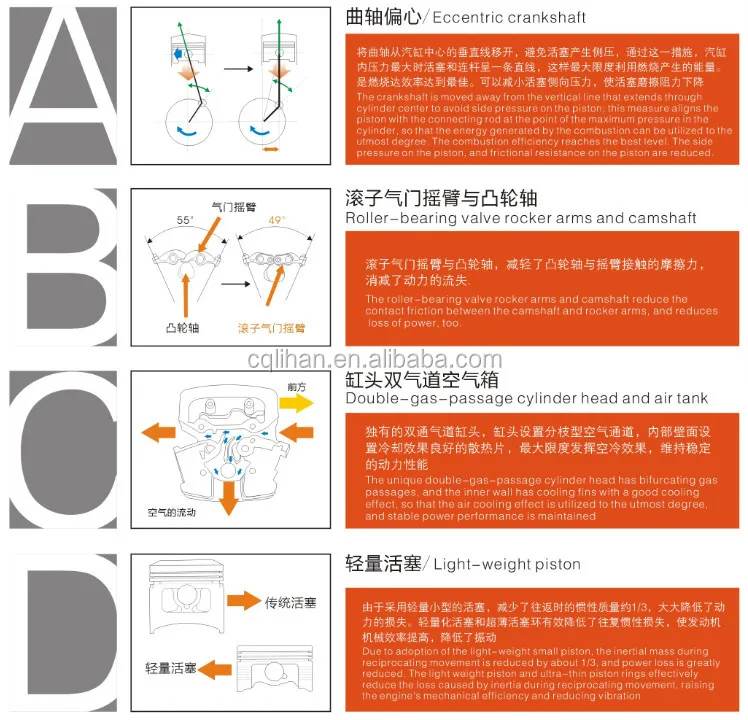 First they take the diameter of the cylinder, known as the bore. Along with the distance the piston has to travel, known as the stoke, and the number of cylinders. That’s all you need to find the volume of the engine.
First they take the diameter of the cylinder, known as the bore. Along with the distance the piston has to travel, known as the stoke, and the number of cylinders. That’s all you need to find the volume of the engine.
Next they put those numbers into this formula: Displacement (CCs) = (π(bore/2)²)(stroke)(cylinders)
There are usually only 1 or 2 cylinders but the rest of the measurements are done in centimeters. Here is a video I found to help explain things if you’re still confused.
If you’re looking for an ATV and want to know which size you should get, there are some factors to consider first. Like your age, weight, experience, and so on. Also consider what you are willing to grow into. Here is a chart I made to get you started based off height. This is just a guide for you to use, you still need to consider what you’ll be comfortable with riding, and what you’ll be using the ATV for.
Here is a chart I made to get you started based off height. This is just a guide for you to use, you still need to consider what you’ll be comfortable with riding, and what you’ll be using the ATV for.
These types of four wheelers are for kids at an entry level. A lot of what you’ll find in this size are between 50cc and 150cc. There’s not much to worry about as far as power out of these kinds of machines because most of them can be regulated with a governor. It’s just a way of limiting the power of the quad, and you can increase the allowed power as your kid grows. To learn more about kids ATVs and what to look for, check out this article.
These types of ATV are made for doing work around the yard. They’re great for hauling, carrying, and towing yard equipment. A lot of people use them for hunting also. There are plenty of attachments you can find for ATVs like this, for example a snow plow can be attached to the front of these.
Because these ATVs are used for working they need more power than a quad type or sport type four wheeler. You can usually find these anywhere from 450cc up to 1100cc. For most applications though, I find that 550cc or 600cc to be plenty of power to get things done around the farm.
You can usually find these anywhere from 450cc up to 1100cc. For most applications though, I find that 550cc or 600cc to be plenty of power to get things done around the farm.
These types of ATVs are the fun toys. A lot of the time you’ll see these types of quads prepared for racing or doing stunts and tricks. You can usually tell this type just by looks, they look more aerodynamic and sporty looking.
These quads look cool and are great for riding around some trails or taking them to a dirt track for some fun. Because these appeal to such a large audience they can be found anywhere from 70cc up to 1100cc. I’ve been able to have plenty of fun on an average 400cc sport quad though. That will give you plenty of power to do the things you’d want it to. I’m not gonna lie, the 700cc Raptor i rode was a beast, but you can still have fun with something like a 250cc Blaster.
These are more of the dune buggy looking off road vehicles. Some seat two people and some seat four or more people. You’ll find these in sport and utility versions for whatever you need them for. But because of the extra passengers and extra weight of the frame, these engines are usually around 700cc up to 1100cc.
Some seat two people and some seat four or more people. You’ll find these in sport and utility versions for whatever you need them for. But because of the extra passengers and extra weight of the frame, these engines are usually around 700cc up to 1100cc.
I hope this has helped you to decide which size engine you should be looking for to fit your needs. If this is your first time buying an ATV, I would suggest buying used if you can. That way the price will be a lot less, and if you decide to sell, you won’t be out all that much money.
Getting a used ATV will also help you discover what you like and don’t like. If you buy brand new, and want to sell in a couple months, you could be out over 1000 dollars. If you buy used on the other hand, you could sell a couple months later maybe even for what you paid for it, depending on what kind of deal you got.
Sharing is caring!
> MOTOR EQUIPMENT> Decoding the designations of ATV engines and increasing power
This article will focus on decoding the markings of Chinese engines.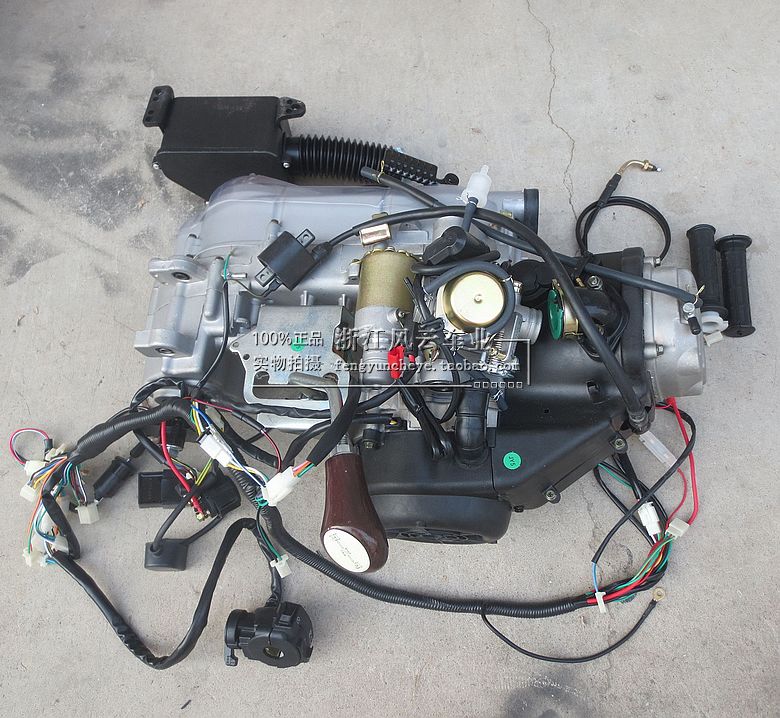
Since there are a lot of engines made in China in our country, I think it is useful to know and understand the abbreviation of numbers and letters that mark these engines:
The first digit of the code corresponds to the number of cylinders. Letter P means a horizontal arrangement, with a V-shaped arrangement of two cylinders, the letter V is put, with a vertical arrangement of the cylinder (or if there are two of them in parallel), the letter is not put.
The second and third digits of are the rounded (upwards) cylinder diameter in millimeters.
The first letter after the numbers indicates the type of cooling system: F - air, by ram air; Q - forced air when the letter before the letter 9 is missing0005 M - means liquid cooling. The very same letter M, always present in the designation, refers to the engines of the motorcycle type.
The third letter of is the code for the working volume in cm / cu: A - <50 ; B - 50 ; C - 60 ; D - 70 ; E - 80 ; F - 90 ; G - 100 ; H - 110 ; I - 125 ; J - 150 ; K - 175 ; L - 200 ; M - 250 ; N - 300 ; R - 350 ; Q - 400 ; R - 500 ; S - 600 ; T - 650 ; U - 700 ; V - 750 ; W - 800 ; X - 900 ; Y - 1000 ; Z - 1200 .
Example:
139QMB: 1-cylinder scooter air vent with bore 39 mm and displacement 50 cc . If we make a simple calculation using the cylinder volume formula V=SpD2/4, we calculate the piston stroke S=41 mm.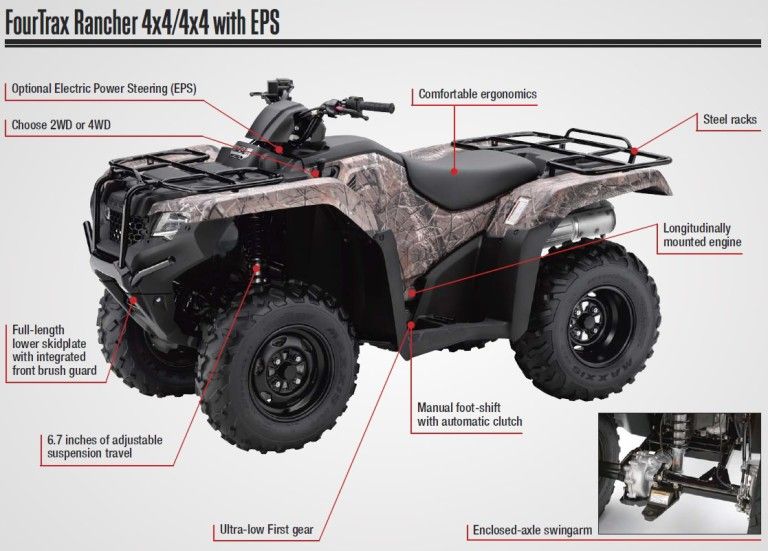 This dimension (with some rounding) has only the engine of the Honda GY6 / 9 family0003
This dimension (with some rounding) has only the engine of the Honda GY6 / 9 family0003
1P39FMB: seems to be the same, but this air-cooled motor is, of course, a 50cc Honda Super Cub clone.
152FMI is also an air-cooled single barrel, 125 cm/cu.m.
255MM - 2-cylinder 250cc liquid-cooled engine, apparently CM250, 2V49FMM - Air-cooled V-twin, clone of Yamaha's "Witch" XV250S Virago.
Since some unscrupulous sellers often decently overestimate the technical characteristics of the motorcycles they sell, in order to gain an advantage in sales over their competitors, we will analyze
Is it possible to increase engine power?
Surely, many of the fans of ATVs sometimes thought about how to make their steel monster faster. Of course, it will not be possible to make a Formula 1 car out of an ATV, but in principle it is possible to slightly increase the speed. So for example, when boring a cylinder, you can increase engine power by about 5%. . Not enough? you can do more, BUT, be prepared to incur significant costs in the modernization process. Since in order to increase engine power, it will be necessary to change not only the cylinder head, or the carburetor, which often simply will not fit this engine “physically”. It will also be necessary to change a number of expensive engine parts, including the shaft and gears. in a nutshell, it is easier to put another, more powerful engine, provided that it is not very different in size from the one being replaced, it will fit into the frame of your ATV and you can fix it there in some way. Since the more power, the larger the size of the engine itself. Example: boat motor. have you seen a 2hp outboard motor? And 5l/s? and 8? now put them side by side and compare the size. The more power, the larger the size of the product itself.
. Not enough? you can do more, BUT, be prepared to incur significant costs in the modernization process. Since in order to increase engine power, it will be necessary to change not only the cylinder head, or the carburetor, which often simply will not fit this engine “physically”. It will also be necessary to change a number of expensive engine parts, including the shaft and gears. in a nutshell, it is easier to put another, more powerful engine, provided that it is not very different in size from the one being replaced, it will fit into the frame of your ATV and you can fix it there in some way. Since the more power, the larger the size of the engine itself. Example: boat motor. have you seen a 2hp outboard motor? And 5l/s? and 8? now put them side by side and compare the size. The more power, the larger the size of the product itself.
Of course, from a 250cc engine, you will never get 350cc, or even 300cc. However, it is possible to increase the power of your engine within reasonable limits.
To do this, we suggest using the following methods to increase the speed and "throttling" of the ATV:
1. Install a new air filter that will supply better air, which will increase the acceleration of your ATV. Such air filters are produced by various manufacturers specializing in spare parts for tuning ATVs. The filter can be bought at an auto or motorcycle shop, or ordered directly from the manufacturer.
2. Install a new exhaust system, ideally a "co-current" exhaust system that will increase the power and speed of your ATV. These systems are also produced by specialized firms.
3. Change the gear ratio by putting a smaller sprocket on your ATV (assuming your ATV has a chain drive). The larger the sprocket and the smaller the sprocket, the greater the speed indicator, in return you sacrifice power. A suitable size sprocket can be purchased at the nearest motorcycle dealer
4. To increase speed, there are CVT kits, jet carburetor kits or sports injection systems.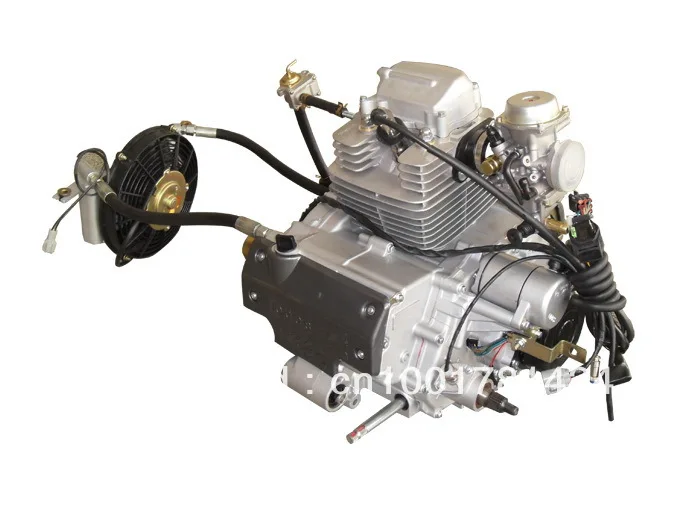 There are also electronic engine control units. They provide enough power and speed.
There are also electronic engine control units. They provide enough power and speed.
5. Increase engine power with the special bore kit. This set includes new valves, camshaft, cylinder head, piston, connecting rod, cylinder. This set will increase the power of your engine and the speed of your ATV. This is the most effective, in our opinion, way to increase the speed of an ATV, although it is more expensive.
Buying an ATV or 4 wheeler can be a daunting task, as the dizzying choice of options on offer can be both exciting and confusing. Luckily, this guide will make it easy for you to sort out the differences, so whether you're buying an ATV for work, leisure, or both, we'll get you from point A to point B on your buying journey.
There are many things to consider when buying an ATV: models, options, uses, pricing, and credit options. We'll start by helping you choose the ATV that suits your lifestyle, show you how to make the choice, which options are right for you, and most importantly, show you how to find the payment option that best suits your budget.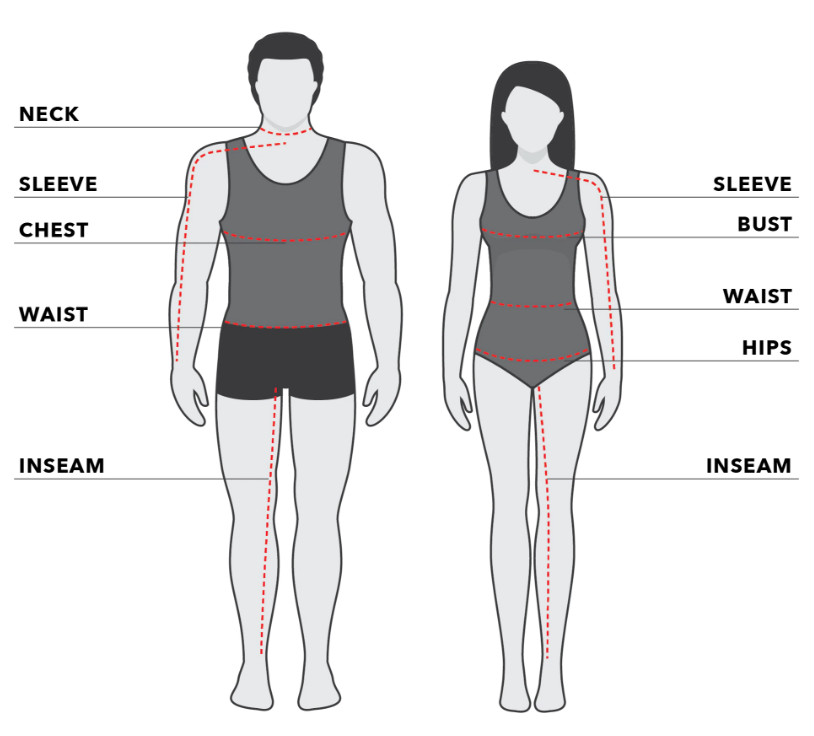 Go!
Go!
What is an ATV?
ATV is a type of popular four-wheeled off-road vehicle designed for easy movement over rough terrain. Used for both work and leisure, they are usually equipped with low-pressure all-terrain tires, high ground clearance and stiff suspension. This means they can easily handle uneven ground, negotiate deep fords or mud, and climb hills with ease. With excellent traction and towing capacity, some are invaluable workers in tough environments like farms, while others can be lighter and faster for outdoor fun. In fact, among the many models and options, you can find an ATV that will do almost everything that you throw on it.
As three-wheelers have largely given way to four-wheelers, the terms have become essentially synonymous. But while a two-wheel drive vehicle may be referred to as an ATV or ATV, a four-wheel drive vehicle usually refers to an off-road vehicle with four-wheel drive or four-wheel drive.
And if you're curious about the difference between an ATV and an ATV, check out our ATV and ATV/Utility ATV guide.
If you ask where to start, we answer - decide what you need an ATV for. Do you need to haul or tow loads on a construction site? Do you want to ride it for hunting? Planning to ride cross country with your family? Do you want to experience the emotions that high-speed ATV riding gives? Maybe a universal model that can do a little of everything? Regardless of your answer, this is the starting point for determining which ATV you should be looking for.
Now that you have a rough idea of what you plan to use your ATV for, let's look at the main categories.
ATV types
First, ATVs differ in engine size. Most engines are measured in cubic centimeters or cm 3 . Some youth ATVs have engine sizes as low as 70cc 3 , while hard-working utilitarian and more sporty ATVs can range from 450 to 1000cc 3 .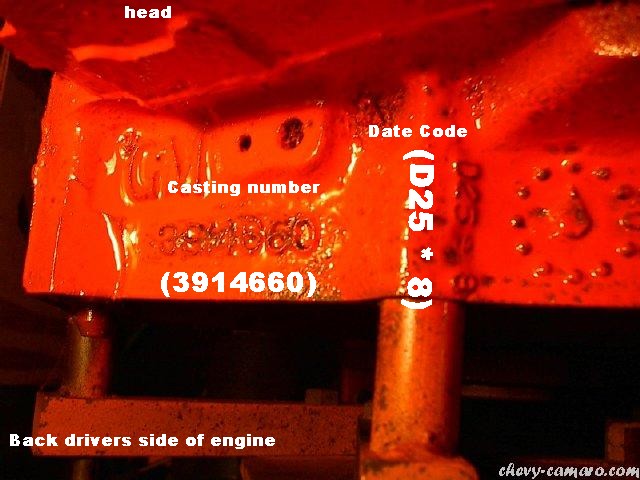 Let's take a closer look at these categories:
Let's take a closer look at these categories:
Driving performance is what matters here. Sport quads are lightweight and have plenty of suspension travel to take big jumps, handle big bumps and make quick turns. The race-proven power of these models makes them much faster than their utility brethren, and riders are happy to retrofit them with the many accessories and options on offer.
Designed for work and hunting, these ATVs feature short travel suspension, a large engine and accessories designed to get the job done. This is the most popular type of ATV due to their ability to haul and tow cargo, as well as their penchant for entertaining when not on duty.
A versatile member of the ATV family, they are ready for adventurous rides on trails and dirt or hunting trips. They are an excellent balance between work and leisure.
Youth ATVs are sized for the age and ability of children, with engines from 70 to 250 cm 3 . Their safety features and easy-to-use automatic transmission are ideal for young riders looking for a taste of off-road.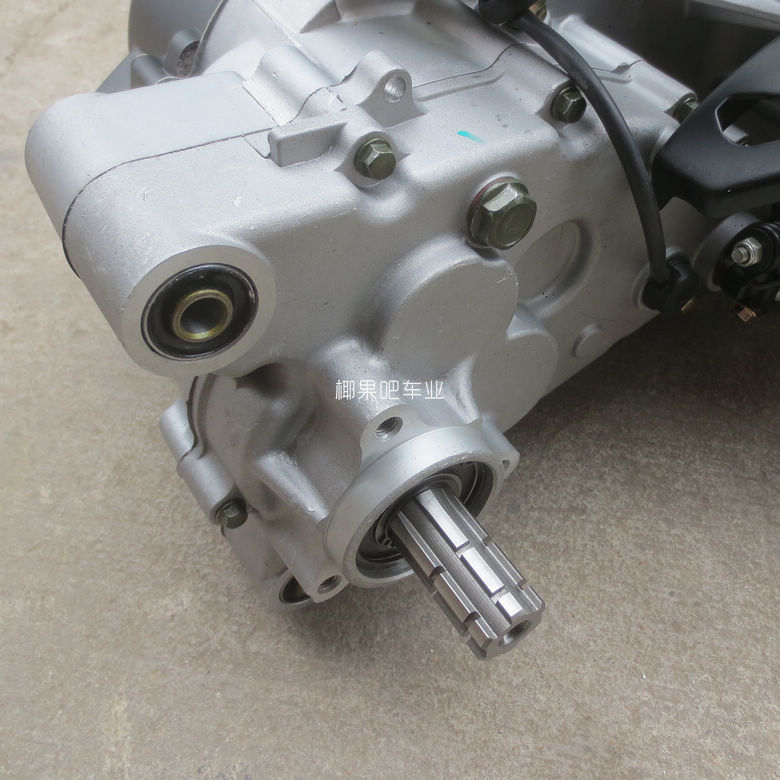
Ride quality is what counts here. Designed for high-speed riding, tight turns and agility, they are made for thrill seekers who want to end the day in a gnat-riddled helmet. With powerful engines, long travel suspension and excellent handling, sport quads raise adrenaline levels in the toughest terrain - from sand dunes to deep mud. The Can-Am Renegade X xc meets all the demands of a sport ATV with a powerful 1000R 91 hp, front double A-arms for perfect stability and a confident wide stance.
This is the most popular type of ATV with short travel suspension, large engines and many accessories and additional equipment designed for work or hunting. They are recognized as reliable workhorses in industries such as agriculture, where their traction and towing capabilities are valued above all else. Hunters love versatile ATVs for their ability to tackle rough terrain and haul large loads. They are often used as a tool, but also too fun to leave alone, so they end up being used as outdoor vehicles.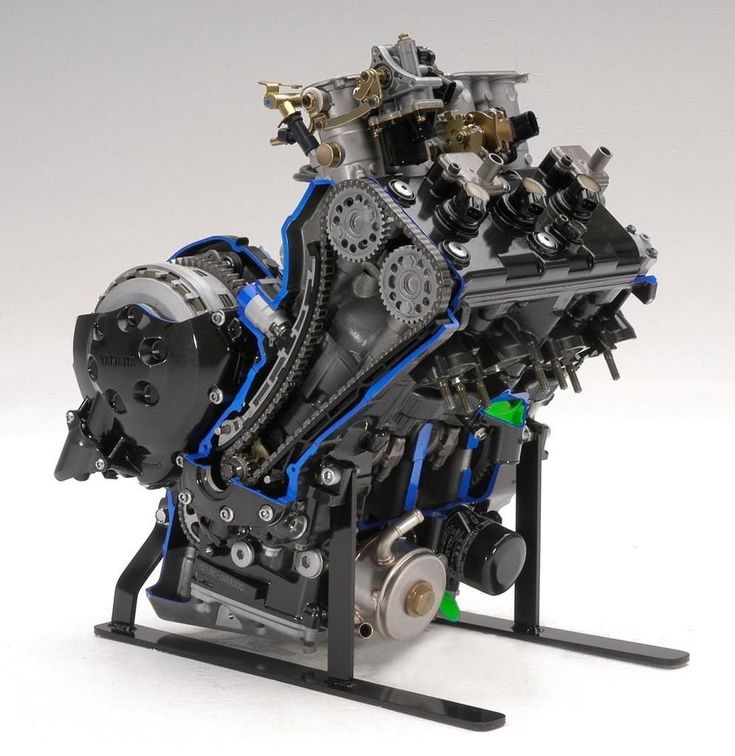 An industry-leading payload capacity of 748kg makes the Can-Am Outlander a star in this category. Its LinQ™ quick-attach system is the ideal high-strength, multi-function carrier system you need to get the job done.
An industry-leading payload capacity of 748kg makes the Can-Am Outlander a star in this category. Its LinQ™ quick-attach system is the ideal high-strength, multi-function carrier system you need to get the job done.
If you're looking to buy a versatile ATV, you should check out our guide to buying the best ATV for farm use.
Recreational ATVs
These ATVs share a few similarities with the utility models, but strike the best balance between getting the job done and going off-road. For most ATV buyers, they are the perfect combination of the full functionality of utility models and the amazing performance of sport quads. It is the best choice for those who have a balanced approach to work and play. The Can-Am Outlander Mossy Oak Edition fits perfectly into this dream category with its exclusive Mossy Oak Break-Up Country camo and factory-installed hunting accessories.
If you're looking for an ATV for hunting trips, don't miss our guide to choosing the best ATV for hunting.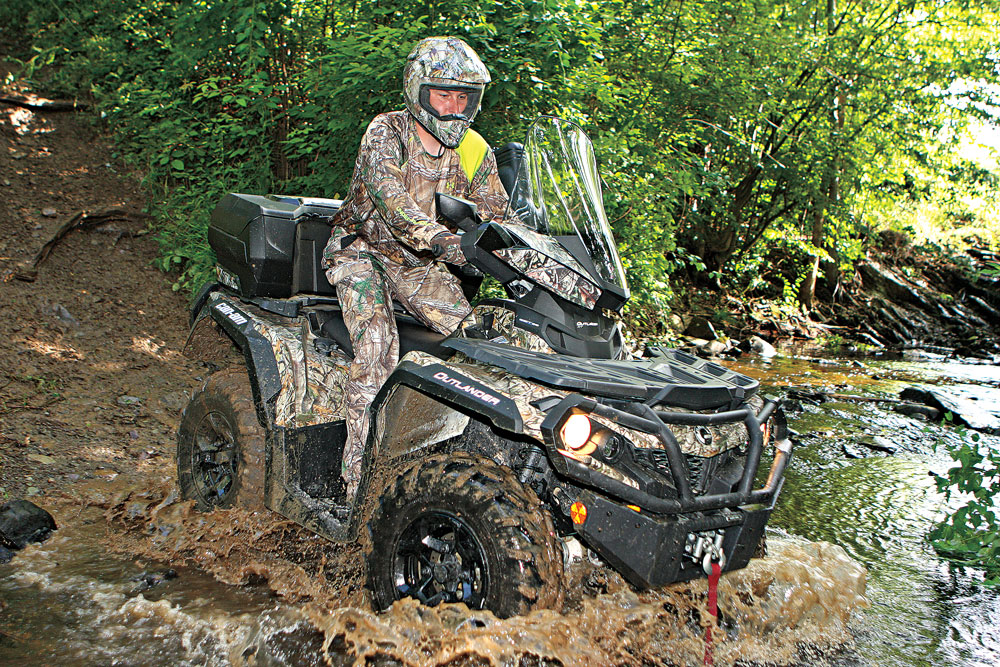
Youth ATVs
Available in a variety of sizes and power options, youth ATVs are a safe and fun way to introduce young riders to the exciting off-road life. The safety and comfort features of the Can-Am DS lineup, such as electric start, speed limiter and confidence-inspiring handling, give young riders the perfect opportunity to get into the world of off-road fun.
What about ATV packages? *
Can-Am's ATV trim options make it easy to select the features that suit your off-road needs. By comparing them to your list, you will end up with the ATV of your dreams. Let's take a look at them!
* Some configurations may not be available in Ukraine. Check with Authorized Dealer >>
"MAX" indicates that Can-Am is a 2-seat ATV that can accommodate a driver and a passenger. Find out more about our range of 2 seater ATVs.
These models are equipped with a dynamic power steering system that provides steering assistance that is directly related to speed: more steering assistance at lower speeds reduces the effort required to turn the steering wheel, and less at higher speeds for maximum "feel" of the steering wheel by the driver.
Models that have additional equipment, accessories and various improvements. It could be better outer protection, upgraded bumpers and a winch.
"P" stands for high performance. Here you get everything in the XT package, but with performance upgrades such as FOX 1.5 Podium QS3 shocks, a Can-Am HD winch, and additional factory upgrades.
Cross-country models. Features designed to deliver the best off-road performance.
Mud models with snorkel, outer protection, retuned suspension, rims and mud tires.
This series is designed for special use in certain conditions. The North Edition is winter-ready with a windshield, heated grips and an L low gear that's perfect for clearing snow. Mossy Oak with exclusive Mossy Oak Break-Up Country camo, 26" 6-ply Carlisle ACT HD tires and high-strength, multi-function racks with LinQ™ quick-attach system is designed for hunting.
For maximum traction in the toughest conditions, 6x6 models have two extra wheels to overcome any obstacles in the way.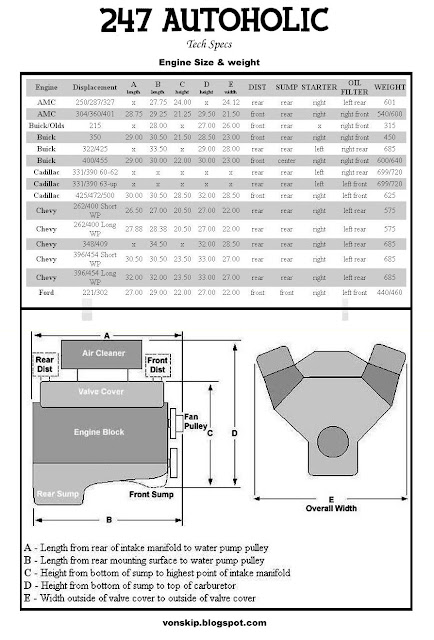 Learn more about 6x6 ATV models.
Learn more about 6x6 ATV models.
What specifications are important for an ATV?
When it comes to ATVs, the most important specifications to consider are the engine, vehicle load capacity, equipment and technology. By focusing on your needs while considering these features, you are sure to find options that suit all your requirements.
The amount of power you want or need depends on the purpose of your ATV, your riding skills, your budget, and how long you've been off-road. Luckily, when it comes to power, you have a lot of options. If hauling heavy loads or towing heavy loads is on your list of jobs, or if you're a speed rider, maybe a bigger engine might work for you - remember cubic centimeters? - and more powerful ATV. A smaller engine is probably the best choice for those drivers who are more concerned with price or ride quality for less experienced off-road riders.
ATVs that need to work hard every day in industries like agriculture need to be able to tow and carry heavy loads.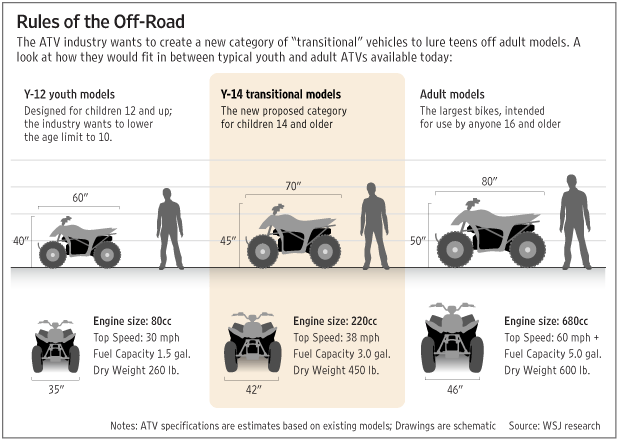 If your ATV has long, hard work days ahead of you, don't forget to prioritize its towing power, load capacity, and fuel tank capacity. You don't want to constantly run out of space for cargo or have to spend a day refueling, do you?
If your ATV has long, hard work days ahead of you, don't forget to prioritize its towing power, load capacity, and fuel tank capacity. You don't want to constantly run out of space for cargo or have to spend a day refueling, do you?
Equipment
Choosing the right accessories will be the key to meeting all your ATV needs. Are you driving cross country? Remember to prioritize suspension to deal with bumps. A winch can save the day time and time again, whether on steep slopes or in wetlands. Large, beefy treads can provide increased traction in the same conditions, but lower profile treads can provide more comfort when traveling with the family or on normal leisure days. Comfort can make all the difference on long workdays and off-road days from dawn to dusk, so features like power steering and throttle control can help reduce fatigue. Can-Am offers an almost endless number of features and options, so be sure to think carefully about your needs and match them with the extras you choose for your ATV.
Just like cars and trucks, the new ATVs are equipped with the latest exciting technology. Can-Am installs many advanced features on its ATV models, including Tri-Mode Dynamic Power Steering (DPS), which provides steering assistance that is directly related to speed: more steering assistance at lower speeds reduces effort required to turn the steering wheel, and less at higher speeds for maximum steering "feel" by the driver. The Can-Am Renegade and its Rotax engine are equipped with Intelligent Throttle Control (iTC) technology for ultimate comfort and control. In Standard, ECO and Sport modes, the iTC electronic throttle control helps deliver power smoothly off-road.
How much can I expect to spend on an ATV?
As we've seen, ATVs vary greatly in size, capability and performance. Accordingly, the price of these also varies, and full size quads usually cost between ~13,000 and 21,000 Euro*. Some of the most popular, in-demand and highly functional ATVs can be had for less than 11,000 Euros. Youth ATVs are cheaper - from about 4000 to 8000 Euro (current price list). The two most important factors that determine the cost of an ATV are engine size and the features and accessories of the ATV.
Youth ATVs are cheaper - from about 4000 to 8000 Euro (current price list). The two most important factors that determine the cost of an ATV are engine size and the features and accessories of the ATV.
Loans can be a great option when buying an ATV and may be a better option. Manufacturers like Can-Am offer affordable ways to get on an SUV, like low interest rates and other perks. Lending makes off-road riding possible and affordable for more people and often gives you the option to upgrade to a more powerful ATV with many useful features. Can-Am offers easy monthly payment estimation tools so you can find the best ATV for your budget.
* Prices in Euro are given for informational purposes only. Payment in hryvnias at the rate of commercial banks of Ukraine.
As you can see, when it comes to ATVs, there are about as many options as there are wild trails to ride them on. To decide which one suits you best, you need to start by carefully considering your needs and doing your homework.